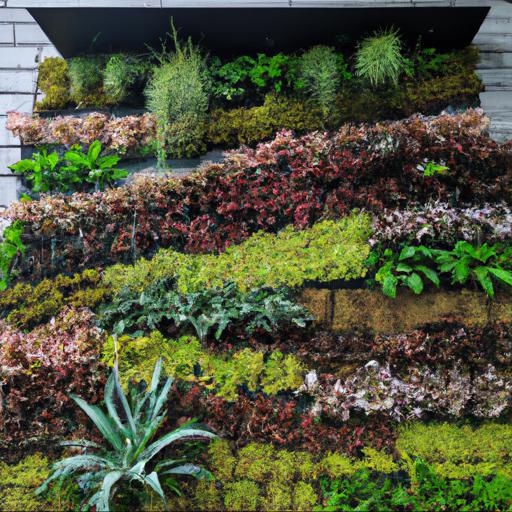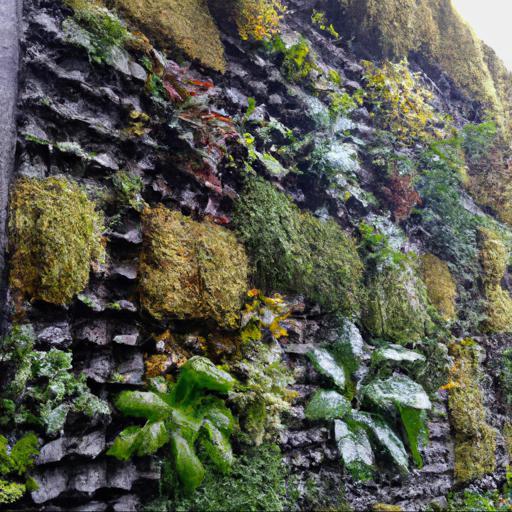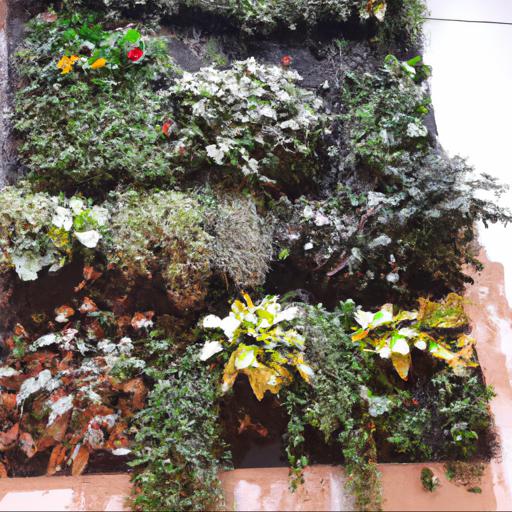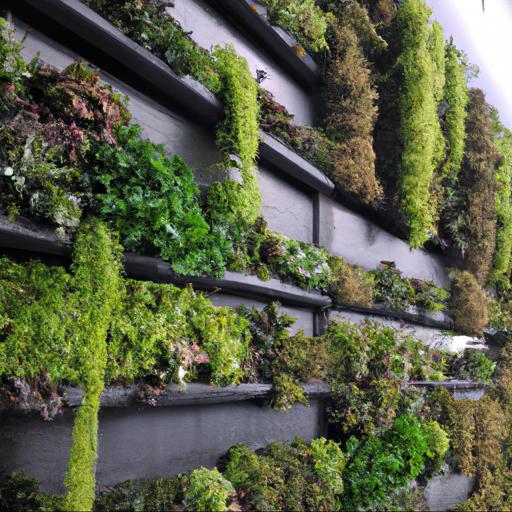Are you looking for a creative way to bring life and color to your home or office? Consider creating a living wall with plants. A living wall is a vertical garden constructed with a variety of plants arranged in a pattern to create an aesthetically pleasing and vibrant display.
With careful selection and proper care, plants for a living wall are sure to bring a unique touch of nature to any space.
Types of plants suitable for a living wall

Green walls, or living walls, are making their mark in the landscape gardening industry, due to their numerous benefits. Not only do they provide a practical solution for those with limited outdoor space, they also have ecological benefits like improving air quality, moderating temperature and sound, and helping to reduce erosion. But if you are seriously considering adding a living wall to your home or business, a key consideration is choosing the right plants for the job.
A living wall isn’t just about aesthetics; it requires plants that are well-suited to survive in the environment, withstanding the conditions of climate, space, and sunlight, as well as the environmental factors associated with their vertical position. Some plants will thrive in a living wall and provide abundant green foliage or even flowers, while other plants may struggle to survive.
When considering suitable plants for a living wall, stick with those that are known to grow in a vertical position, like various types of ferns, ivy, and certain types of ornamentals like pelargoniums and other trailing varieties. Slow-growing shrubs, like laurel and box, also look great, while evergreen climbers like clematis can create attractive and varied foliage, with stunning displays of flowers in the spring. There are also plenty of species of hedera to choose from, which have the added bonus of providing all-important protection from direct sun and allowing the wall to dry in between watering.
Living walls come in many different layouts and designs, so it is a good idea to think about what look you are trying to create, and then make sure your selection of plants will compliment each other, taking into account spacing and colour. Do also consider the eventual size of the plants.
While some, like ferns, will remain small and neat for many years, others such as complex shrubbery may need regular pruning to keep them in check. When planning a living wall, the best advice is to make sure you research which plants will be suitable, and then speak with a qualified garden expert.
Doing this can seem daunting, but with a broad selection of plants to choose from, creating a successful, attractive, and long-lasting living wall is an achievable and worthwhile goal.
Tips for planting and maintaining a living wall

As a UK garden expert, I have gathered some useful tips for planting and maintaining a living wall. Living walls, also known as green walls, present gardeners with an exciting challenge – if you’re up for the challenge of creating a vibrant and healthy living wall, these tips will set you up for success. First, it’s important to choose plants that are well suited to your wall.
Research what type of sunlight, moisture level, and other environmental factors your chosen plants need in order to prosper. You’ll also want to be careful to select a mixture of plants that won’t overwhelm the wall or require too much maintenance.
Succulents like Aloe Vera and Sedum are particularly adaptable and can work in many living walls. You’ll also want to consider any weight restrictions your wall may have – some plants will be heavier than others and it’s important to find out the maximum load that your wall can hold before you start planting. Once you’ve settled on your plants, you’ll need a proper irrigation system in place.
Make sure the water is able to penetrate deep into the wall. You can use drippers, hoses, or even a regular spray for more regular watering if necessary.
Finally, if you’re planning on using soil directly in the wall, you’ll want to use lightweight soil and ensure that each section has a proper drainage system. For example, you can use a light-weight hydroponic mix combined with peat moss, perlite, and vermiculite. You’ll also want to make sure to provide the wall with enough nutrients and fertilizers throughout the season.
Once you have your planting strategy in place, you’ll be able to enjoy your living wall for years to come. Depending on the types of plants you choose, you may even be able to use the wall for vegetables and other edible crops.
With these tips for planting and maintaining a living wall in mind, you’re well on your way to creating your own stunning, lush green wall.
Creative ideas for designing a living wall

Living walls – also referred to as green walls or vertical gardens – are one of the most creative and eye-catching ways to decorate a home or workspace. They come in a variety of designs and sizes, containing an expanse of different plants, herbs and flowers that can bring life and beauty to any area.
But deciding what plants to use in a living wall can be tricky business. Fortunately, there are plenty of options to choose from. Succulents are a great pick for a modern, sleek look, while palms, ivy and ferns provide a calming, natural atmosphere.
Depending on the climate in your area, there may also be plenty of flowering plants to choose from, including daisies and violets. No matter what type of plants you choose for your living wall, it’s important to select the right soil, fertilizer and irrigation system to ensure your plants can grow healthily. In addition to nourishing your plants, proper maintenance and design are essential for keeping your living wall looking its best.
There are creative gardeners out there who have come up with fascinating ways to display their plants, from maintenance free options that require practically zero effort, to options that involve unconventional support systems such as canopies, nets and trellises. No matter what kind of living wall you create, there is no doubt it will be a striking addition to any space.
With a bit of planning and the right plants, you can create a living wall that will bring life, beauty and serenity to your home or workspace.
Our video recommendation
Final Touch
Living walls are a great way to add a touch of green to your home or office. They are a great way to bring nature indoors and are becoming increasingly popular.
Plants for a living wall can range from succulents, herbs, ferns, and ivy to larger shrubs and evergreens. With careful planning and installation, you can create a beautiful, vibrant living wall that adds life and color to any space.
FAQ
What types of plants are best suited for a living wall?
The types of plants best suited for a living wall are typically those that are low-maintenance, drought-tolerant, and have a low growth habit. Examples include succulents, ferns, ivy, and other trailing plants.
What are the benefits of having a living wall?
The benefits of having a living wall include improved air quality, noise reduction, temperature regulation, and aesthetic appeal. Additionally, living walls can help to reduce energy costs, provide habitat for wildlife, and help to reduce stormwater runoff.
How much maintenance is required for a living wall?
The amount of maintenance required for a living wall depends on the type of plants used and the environment in which it is located. Generally, living walls require regular watering, pruning, and fertilizing to keep them healthy and looking their best.
What is the best way to water a living wall?
The best way to water a living wall is to use a drip irrigation system, which will deliver water directly to the roots of the plants. This will ensure that the plants get the right amount of water without over-watering or under-watering.
How much light is needed for a living wall to thrive?
The amount of light needed for a living wall to thrive will depend on the type of plants used. Generally, most plants need at least six hours of direct sunlight per day to thrive.
What are the best materials to use for a living wall?
The best materials to use for a living wall are plants, soil, and a trellis or other support structure.

